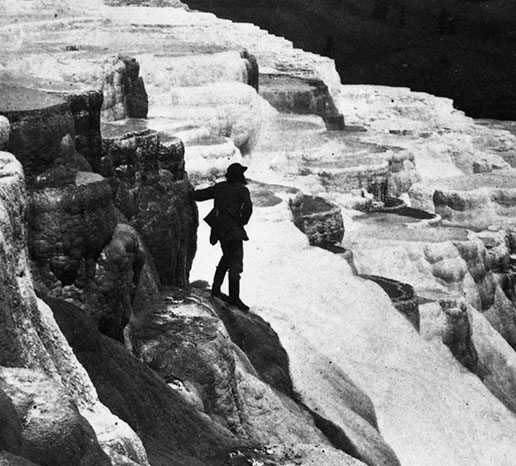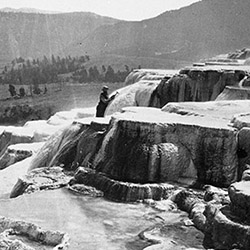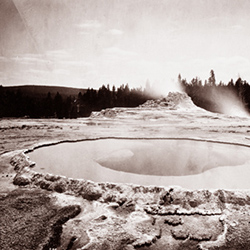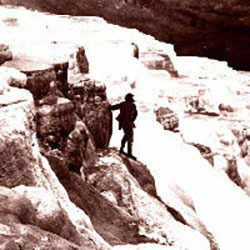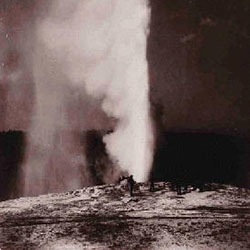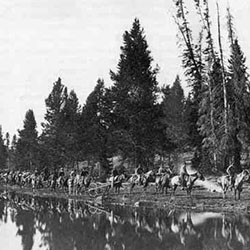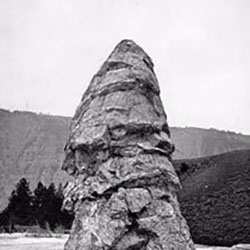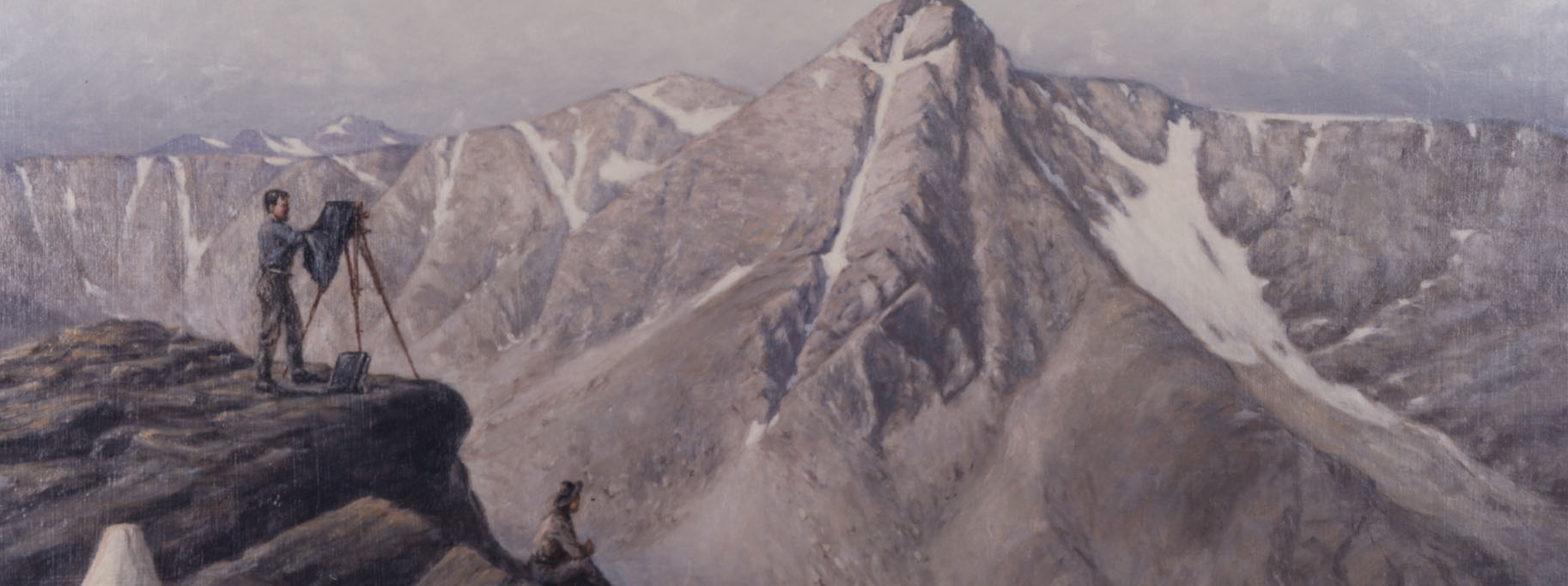
Hayden Expedition
In 1871, Moran accompanied the 1871 Geological Survey of the Yellowstone region led by fellow Philadelphian Dr. Ferdinand V. Hayden. Early survey teams often included artists and photographers. In the days before color photography, artists provided an added dimension to the documentation needed for a successful expedition.
The Hayden party included eighty-three expedition members who often splintered into smaller parties. One group included Moran and survey photographer William Henry Jackson (1843 – 1942). Jackson and Moran developed a close personal friendship and highly productive professional partnership.
Jackson described Moran as "slight and frail" yet "wiry and active." Although Moran had never ridden a horse, only camped once, and was unaccustomed to camp food, he was determined to do whatever was needed to paint the Yellowstone region. Moran impressed and earned the respect of survey members with his adaptability, tirelessness, and courage. The artist "made a picturesque appearance" on horseback, Jackson wrote, and in a letter home, Moran confessed "You should see me bolt the bacon."
Moran and Jackson collaborated in selecting views and creating images that brought the near-mythical Yellowstone region to life. While many visitors to Yellowstone are most captivated by the geysers and other thermal features and wildlife, Moran and Jackson devoted more time to the Grand Canyon of the Yellowstone than anywhere else in Yellowstone.
Read MoreAfter several weeks in the Yellowstone Valley, Moran had documented almost thirty sites and returned home with dozens of sketches and water colors. Together, the two produced a rich, extensive and stunning visual record of Yellowstone's scenery, and became lifelong friends.
Just seven months after Moran's work on the Hayden Survey ended, Yellowstone National Park was a reality. Three months later, after creating a public sensation, Moran's panoramic "Grand Canyon of the Yellowstone" was purchased by the Congress for display in the Senate lobby. A noted art critic called it "the only good picture to be found in the Capitol." This magnificent landscape is now in the Department of the Interior museum collection. It is on exhibit at the Smithsonian Institution, National Museum of American Art in Washington, DC.
